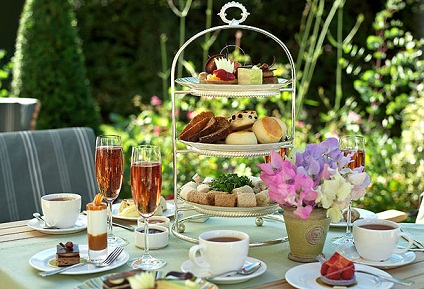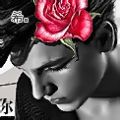Today I saw a post in which it regards "下午茶" as "high tea". However, I think it should be afternoon tea rather than high tea.
So I am gonna talk about the difference between afternoon tea and high tea.

Outside of the UK, many people refer to afternoon tea as "high tea." Although the idea that high tea is a meal of foods like scones and finger sandwiches is common, it is not actually correct in a traditional or historical sense.
Afternoon Tea Basics
Afternoon tea, also known as "low tea," is what most people think of when they hear "high tea." It involves things like manners, lace and dainty foods. It is typically served in the mid-afternoon and it was traditionally served on low tables, hence it has two names.
Afternoon tea was considered to be a ladies' social occasion.
High Tea Basics
Traditionally, high tea was a working class meal served on a high table at the end of the workday, shortly after five PM. It was a heavy meal of meat dishes (such as steak and kidney pie), fish dishes (such as pickled salmon), baked goods (such as crumpets or, in Ireland, barm brack), vegetables (such as potatoes or onion cakes), and other heavy foods (such as baked beans and cheesy casseroles).
High tea was more of a working class family meal than an elite social gathering.
A Brief History of Afternoon Tea
Legend has it that afternoon tea was started in the mid-1800s by the Duchess of Bedford. Around this time, gas or oil light was introduced in wealthier homes, and eating a late dinner (around eight or nine PM) became fashionable. At the time, there were only two meals each day -- a mid-morning, breakfast-like meal and the other was an increasingly late dinner-like meal.
The story goes that the Duchess found herself with a "sinking feeling" (likely fatigue from hunger during the long wait between meals) and decided to have some friends over for assorted snacks and tea (a very fashionable drink at the time). The idea of an afternoon tea gathering spread across high society and became a favorite pastime of ladies of leisure. Later, it spread beyond the highest elites and became more accessible for some other socioeconomic groups.
So I am gonna talk about the difference between afternoon tea and high tea.

Outside of the UK, many people refer to afternoon tea as "high tea." Although the idea that high tea is a meal of foods like scones and finger sandwiches is common, it is not actually correct in a traditional or historical sense.
Afternoon Tea Basics
Afternoon tea, also known as "low tea," is what most people think of when they hear "high tea." It involves things like manners, lace and dainty foods. It is typically served in the mid-afternoon and it was traditionally served on low tables, hence it has two names.
Afternoon tea was considered to be a ladies' social occasion.
High Tea Basics
Traditionally, high tea was a working class meal served on a high table at the end of the workday, shortly after five PM. It was a heavy meal of meat dishes (such as steak and kidney pie), fish dishes (such as pickled salmon), baked goods (such as crumpets or, in Ireland, barm brack), vegetables (such as potatoes or onion cakes), and other heavy foods (such as baked beans and cheesy casseroles).
High tea was more of a working class family meal than an elite social gathering.
A Brief History of Afternoon Tea
Legend has it that afternoon tea was started in the mid-1800s by the Duchess of Bedford. Around this time, gas or oil light was introduced in wealthier homes, and eating a late dinner (around eight or nine PM) became fashionable. At the time, there were only two meals each day -- a mid-morning, breakfast-like meal and the other was an increasingly late dinner-like meal.
The story goes that the Duchess found herself with a "sinking feeling" (likely fatigue from hunger during the long wait between meals) and decided to have some friends over for assorted snacks and tea (a very fashionable drink at the time). The idea of an afternoon tea gathering spread across high society and became a favorite pastime of ladies of leisure. Later, it spread beyond the highest elites and became more accessible for some other socioeconomic groups.
[ 此帖被左。微希在2011-09-03 00:50重新编辑 ]



